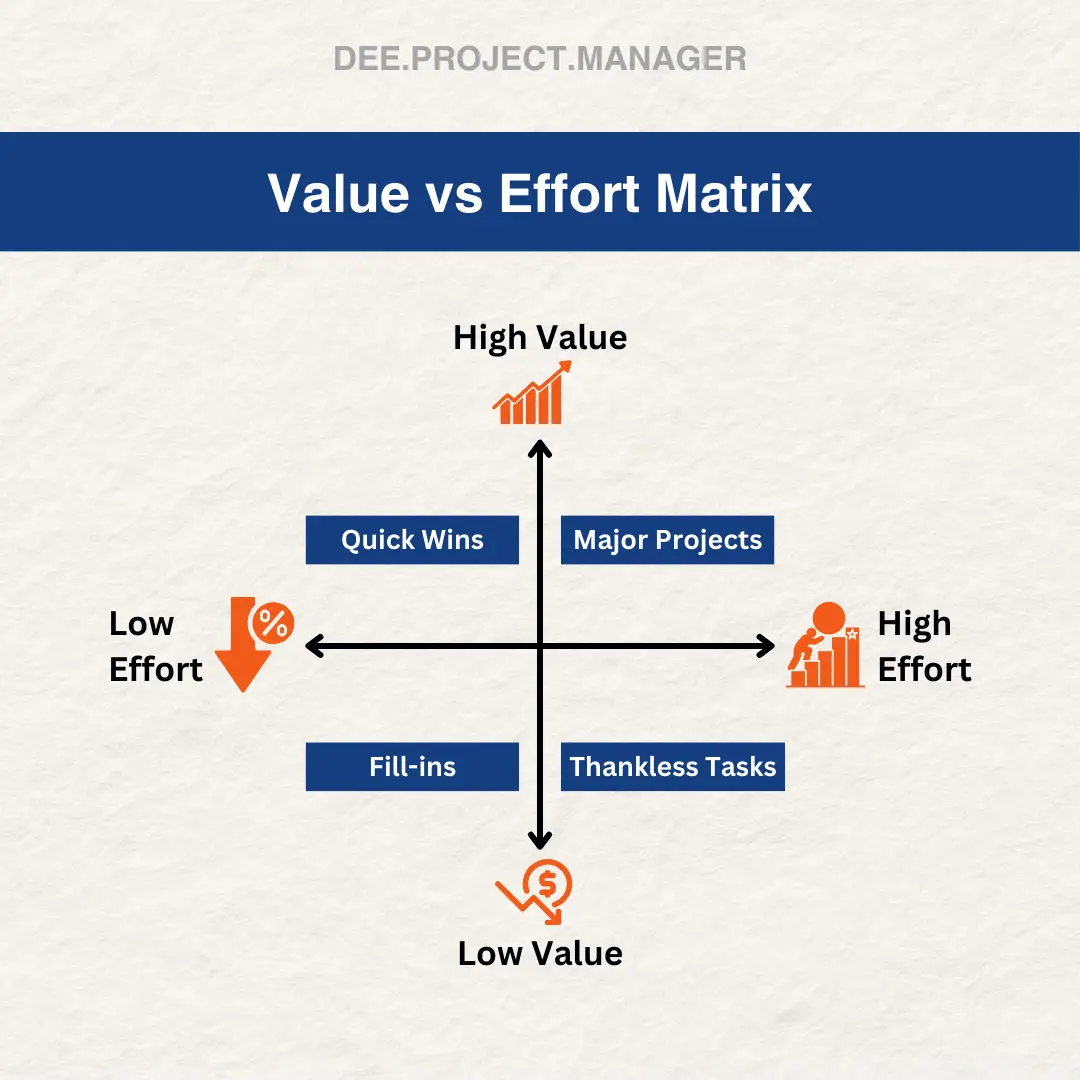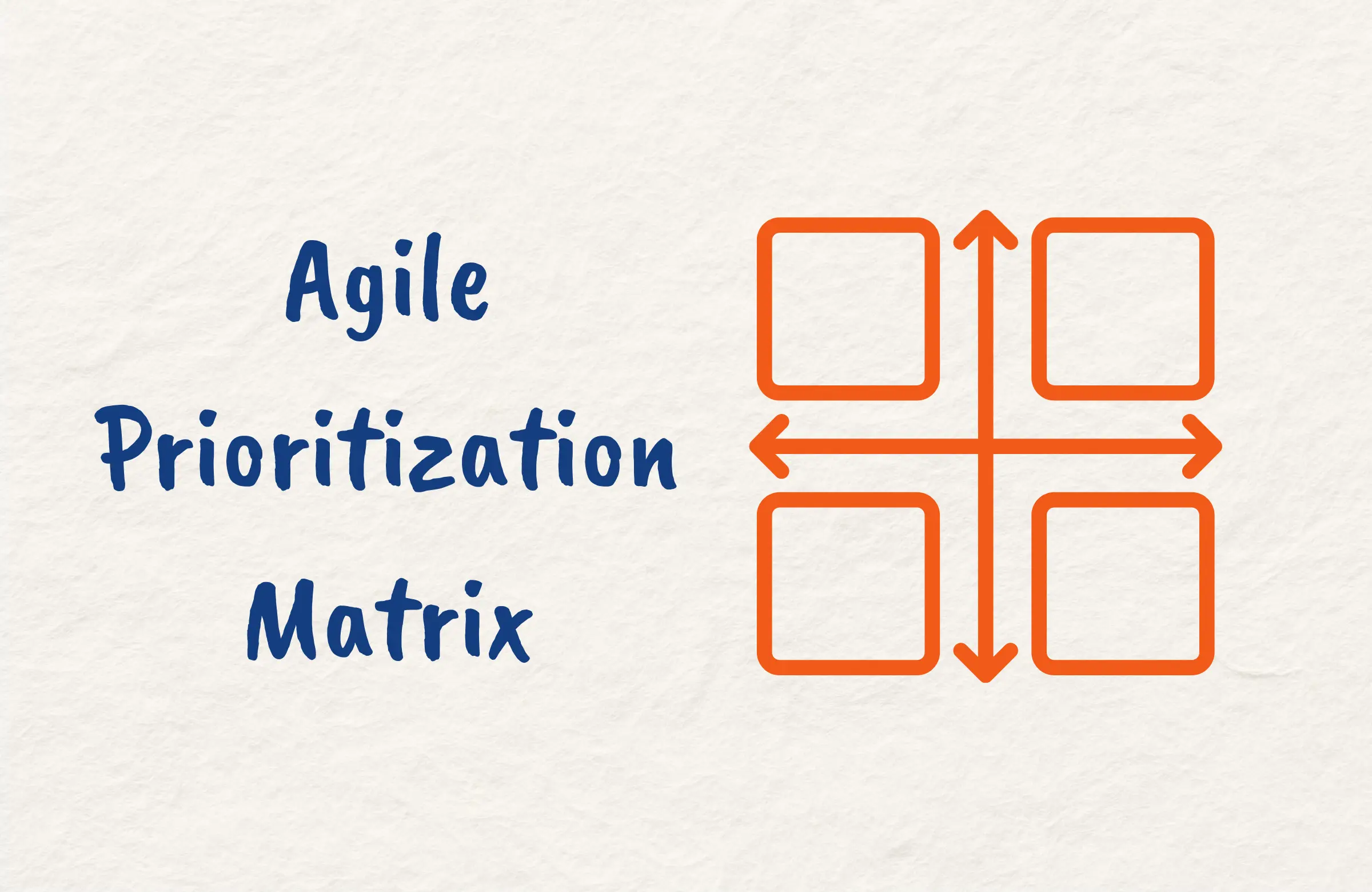If you are looking to optimize your Agile projects and enhance your team’s decision-making, then implementing an Agile prioritization matrix can help you achieve this strategic goal.
This flexible framework allows product managers and team members to evaluate tasks based on factors like impact and effort. With its emphasis on collaboration and transparency, the matrix provides clarity on project priorities.
In this article, we’ll cover what an Agile prioritization matrix entails. You’ll learn about its components, the criteria to consider, and the benefits it offers for streamlining workflows.
To top it up, we’ll provide a customization Agile prioritization matrix template that you can leverage to increase efficiency and steer your Agile projects toward success.
What is Prioritization in Agile?
Prioritization is a critical process in Agile methodologies that involves determining the order in which features, user stories, or tasks should be addressed to allow Agile teams to focus efforts on the most valuable items first.
Prioritization happens continuously throughout an Agile project because as new information emerges, the priority of items may shift. Agile teams thus need to decide what to work on in each Sprint to deliver the maximum business value.
An effective prioritization strategy aligns the development team’s efforts with the goals and needs of key stakeholders which enables the team to balance priorities and handle changing requirements.
While Product Owners often lead prioritization, the process involves collaboration between the Product Owner, team, and customers.
Prioritization occurs at multiple levels in Agile, ranging from epics and stories to specific tasks. Understanding what to prioritize and when is crucial for Agile teams seeking to optimize workflow and increase speed to market.

What is an Agile Prioritization Matrix?
An Agile prioritization matrix is a visual tool used to rank items based on specific criteria.
It provides a structured framework for prioritization that brings clarity to the process and allows product managers to map out features, stories, or tasks on a grid.
The x-axis represents one prioritization factor such as business value while the y-axis represents another factor like effort. Each item is scored and plotted on the matrix accordingly offering a clear picture of priority based on the predefined criteria.
Items in the top right quadrant are high priority as they have high business value and low effort, and the matrix quickly highlights quick wins and top priorities.
Agile teams can reference the matrix throughout a project to guide decision-making on what to work on next with it serving as a point of collaboration and alignment.
The tool is flexible enough to be adapted as priorities inevitably shift in Agile environments.

Four Types Of Prioritization Matrices
There are several types of prioritization matrices, each with its own structure and criteria to suit different needs. Choosing a matrix that suits your needs accelerates informed decision-making.
Below we explore four popular options:
1. Eisenhower’s Prioritizing Matrix
The Eisenhower Matrix categorizes tasks based on their urgency and importance. This approach helps teams determine which activities require immediate attention (urgent and important) versus those that can wait (not urgent or important).
Plotting tasks allows you to identify quick wins as well as items you should schedule for later. This simple 2×2 matrix enhances time management.
2. Value vs Effort Matrix
The Value vs Effort model evaluates potential projects based on:
- Value – The business value created by implementing the feature
- Effort – The work required to deliver the project
Each criterion gets a rating. Plotting value and effort scores visually displays priority which helps teams compare and rank opportunities.
3. Value vs Risk Matrix
The Value vs Risk matrix assesses initiatives based on:
- Value – The potential business value if successful
- Risk – The uncertainty and chance of failure
Mapping value and risk provides insight on which projects to pursue or avoid and highlights items with high value and low risk.
Value vs Complexity Matrix
The Value vs Complexity matrix analyzes features using:
- Value – The expected business value to be gained
- Complexity – The difficulty level and intricacy of implementation
Visualizing value and complexity enables the prioritization of simpler, high-value items over complex initiatives.

Prioritization Matrix Criteria
The criteria used to evaluate items in a prioritization matrix can make or break its effectiveness.
Selecting appropriate criteria aligns the prioritization with broader goals and ensures meaningful analysis.
Let’s explore key criteria to consider:
Business Value
Business value looks at the potential financial impact and strategic importance of implementing a feature. High business value features offer greater ROI.
Consider factors like:
- Revenue opportunities
- Cost reduction
- Improved customer retention
Effort
Effort estimates the workload required to complete a task. It’s essential to weigh effort against value.
Aspects determining effort include:
- Time/hours needed
- Team size
- Skills required
Risk
Risk criteria evaluate the uncertainties and chances of failure and higher risk items require mitigation plans.
Risk factors to assess:
- Missing capabilities or resources
- Market uncertainty
- Technical complexity
Customer Impact
This analyzes the potential to improve customer experience and satisfaction. Focus on high customer impact features.
Ways it enhances experience:
- Addresses pain points
- Delivers excitement
- Improves usability
Carefully defining criteria upfront provides a framework to objectively evaluate priorities. Then revisit and adjust criteria as needed to keep the matrix relevant.

Components of an Agile Prioritization Matrix
Crafting an effective prioritization matrix requires bringing together the right components to suit your framework depending on your needs.
Let’s examine key elements to include:
Criteria
The criteria form the backbone of your matrix. They will be represented on the x and y axes. Popular criteria include:
- Business value
- Effort
- Time sensitivity
- Risk
Choose criteria that help you objectively evaluate priorities for your project.
Ratings
A rating scale is needed to score items on each criterion. Simple scales include:
• High/Medium/Low
• 1-5 or 1-10 points
• Must Have/Should Have/Could Have/Won’t Have
Determine ratings that offer sufficient granularity without overcomplicating assessments.
Tasks/Items
The key inputs of your matrix will be the tasks, stories, features, or initiatives to be prioritized and plotted based on criteria ratings.
Capture a comprehensive list of all items in the matrix scope.
Quadrant Labels
Segment your matrix grid into 4 quadrants and give them meaningful labels based on priorities, such as:
• High Value/Low Effort = Quick Wins
• High Value/High Effort = Major Projects
• Low Value/Low Effort = Fill-ins
• Low Value/High Effort = Thankless Tasks
Weighting (optional)
You can consider assigning weights to criteria if some are substantially more important than others. For example, make Business Value 50% and Effort 30%.
Why Use an Agile Prioritization Matrix
Adopting an Agile prioritization matrix offers valuable benefits for your team and project. Let’s look at some of the key reasons to use one:
Visualization
The Agile prioritization matrix creates a visual representation of priorities, allowing you to literally see and analyze the landscape.
This clarity is especially helpful for communicating across teams and stakeholders.
Alignment
By defining shared criteria, the matrix provides alignment and transparency on how the prioritization decisions are made which helps to set expectations.
Data-Driven Decisions
Rating items against standardized criteria introduces objectivity and a data-driven approach to prioritization which boosts confidence in choices.
Adaptability
The fluid structure of matrices makes them easy to adjust as priorities shift which is perfectly suited for Agile environments.
Focus
Agile Prioritization matrices highlight top priorities such as quick wins, enabling focus on items that offer maximum value thus helping to prevent wasting of time on less critical features.
Collaboration
The matrix becomes a collaboration tool as plotting priorities is an interactive activity that facilitates discussion and consensus.
How to Use an Agile Prioritization Matrix
If you are ready to implement your own Agile prioritization matrix, then follow these steps to put the framework into action:
1. Choose Your Criteria
First, determine the criteria your matrix will use to evaluate priorities. Popular options as earlier iterated include:
- Business value
- Effort
- Time sensitivity
- Risk
- Dependencies
Choose criteria that provide meaningful insights for your prioritization.
2. Define Your Ratings
Next, define a rating scale for scoring items on each criterion. For example:
- High/Medium/Low
- Numeric values like 1-5 or 1-10
- Must have/Should have/Could have/Won’t have
Keep the ratings simple and consistent across your selected criteria.
3. List Your Items
Build a comprehensive list of all the items you need to prioritize, such as features, stories, or tasks. Capture details for each item.
4. Plot Your Matrix
For each item, assign ratings for each criterion. Then map the items on a grid with criteria as axes based on ratings.
5. Analyze Quadrant Priorities
Look at how items cluster within the quadrants. Using the Value vs Effort matrix for reference, items that fall in the high-value, low-effort quadrant are top priority.
6. Collaborate and Align
Share the matrix with stakeholders and discuss outcomes using it as an alignment tool.
Adjust Dynamically
Keep the matrix as a living document and continuously update criteria ratings and the matrix as priorities shift.

Who Can Use an Agile Prioritization Matrix?
Agile prioritization matrices are versatile tools that can provide value for various roles. Here’s a look at key stakeholders who can leverage them:
Product Managers
Product managers often lead prioritization, deciding which features deliver maximum customer and business value.
An Agile prioritization matrix gives product managers an organized framework to evaluate and communicate priorities.
Project Managers
Project managers can use a matrix to sequence tasks, optimize resource allocation, and keep initiatives on track as it enhances planning and risk management.
Development Teams
Matrix visibility helps development teams gain alignment and focus their efforts on the most critical work first ensuring consistency across the organization.
Executives/Leadership
At the executive level, the matrix provides data-driven insights for strategic decision-making on company initiatives and objectives.
Benefits of Using an Agile Prioritization Matrix
An Agile prioritization matrix serves as a strategic tool to enhance project and team performance.
Implementing it offers several impactful benefits for your team’s effectiveness and project outcomes including:
Enhanced Decision-Making
The matrix provides a clear framework for making prioritization decisions objectively based on defined criteria which removes bias and emotional influence from choices.
Increased Efficiency
By accelerating consensus on priorities, the matrix enables faster decision-making and improved efficiency allowing more time for execution.
Optimized Resource Allocation
The data-driven approach focuses resources on high-value activities first. This optimization ensures resources are not wasted.
Reduced Risk
Identifying and addressing high-risk items early mitigates threats to project timelines and success.
Improved Transparency
Visualizing priorities fosters transparency both within the team and with stakeholders which improves alignment and expectations.
Enhanced Collaboration
The participative process of plotting priorities provides opportunities for productive collaboration and discussion.
Greater Adaptability
The flexible matrix structure is easy to adjust as priorities change and supports agility in dynamic environments.

Common Challenges and Solutions in Using Agile Prioritization Matrix
While Agile prioritization matrices offer many benefits, there are also some common challenges teams may face in leveraging them effectively. Being aware of these pitfalls allows you to proactively address them.
Here are some challenges to watch out for and ways to surmount or mitigate them:
Inaccurate Effort Estimating
A lot of teams often struggle to accurately estimate the level of effort required to complete tasks which skews prioritization decisions.
Solution: Provide reference data on task durations, have multiple team members estimate effort, and revisit estimates regularly.
Difficulty Balancing Diverse Priorities
It can be challenging to balance factors like business value, risk, and effort that may compete as priorities.
Solution: Assign clear weightings to criteria based on their importance and hold priorities discussions.
Lack of Buy-In
Without visibility into the prioritization process, some team members may not buy into the priorities.
Solution: Increase transparency by sharing the matrix and rationale, and engage the team in plotting priorities.
Matrix Becomes Outdated
If not updated regularly, the matrix can fail to reflect evolving priorities.
Solution: Review and adjust the matrix at the start of each sprint to keep it current.
Disagreement on Ratings
Team members may sometimes disagree on the appropriate ratings to assign items.
Solution: Establish clear definitions for each rating value to minimize subjectivity issues.
Agile Prioritization Matrix Template
If you are looking to get started with your own Agile prioritization matrix without having to start from scratch, use this free, customizable template to kickstart the process.
The ready-to-use matrix allows you to easily visualize priorities across key criteria.
Conclusion
An Agile prioritization matrix offers immense value for Agile teams seeking to enhance workflow and decision-making.
This dynamic tool provides a clear structure for evaluating priorities based on criteria like business value and effort.
Visualizing priorities in a matrix fosters collaboration, transparency, and informed choices.
Whether you’re a Product Owner or team member, adopting this framework can optimize resource allocation, reduce risk, and boost team focus. Leverage its flexibility to meet your evolving needs.





